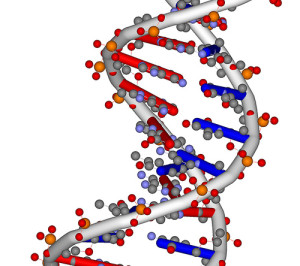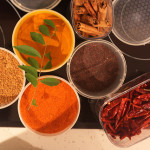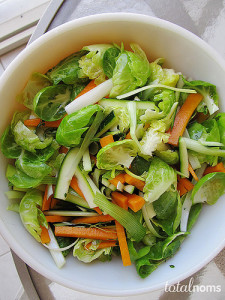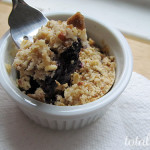by Michelle Sutton-Kerchner
In striving for a healthy lifestyle, much concern is rightly dedicated to nutrition. Wouldn’t it be simple if we craved healthy food? Why can’t Brussels sprouts be our weakness? For some, maybe they are …
By understanding your preference for certain tastes, it might be easier to eat better. Taste is the most personal of our senses. With other senses, we see the same image, hear the same sound, feel the same texture, smell the same scent. Although, these outcomes may please one person and not another. (Hence, one person’s jamming guitar is another’s headache.)
However, we never can be totally certain how one person perceives a specific flavor. Whether it is too sweet, spicy, or salty is, well, in the taste buds of the beholder. And, how do we know for sure a cookie tastes the same for everyone? Perhaps it is liked or disliked because it actually tastes different to different eaters.
Acquired Tastes

Research has long investigated the origin of taste preferences. It is another debate of nurture versus nature. A recent study published in the journal Obesity indicated genes are a significant factor in a child’s tendency to avoid new foods, called food neophobia. Genes outweighed environment by 72 percent of the four- to seven-year-olds studied. Previous studies already proved this genetic predisposition in older children and adults.
Along with the influence of genetics on the likelihood to try new food, genetics also plays a role in the type of food preferred. For example, a taste for sweet and bitter flavors is considered genetic. New research suggests this taste preference could be linked to metabolic syndrome. Metabolic syndrome is a group of health issues that combine to increase risk for serious health conditions like heart disease and diabetes. Therefore, knowing the origin of preference becomes a health factor.
As researchers further understand the influence of genetics on food choices, not just the reluctance to be adventurous with new tastes, better nutrition can be constructed from childhood years. Strategies can be created for healthier mealtimes, which hopefully include a broader variety of foods.
Flavorful Facts
With an average of 9,000 taste buds per adult, it isn’t surprising we love to eat. Sweet, sour, bitter, salty, and savory (umami) all trigger chemicals that react with saliva to produce their taste. This can be realized when taking medicine. A pill on a dry tongue is tasteless until it is washed down with water. Swallow quickly once water begins to dissolve it, or experience the bitter taste.
Age decreases sense of taste. This is usually attributed to the decrease of taste buds. As children, we may have up to 10,000 taste buds. Gradually, age diminishes them. If an individual succumbs to dementia as well, its villainous role desensitizes taste even further.
Lack of taste can have unhealthy consequences. It limits the ability to determine a food’s freshness, increasing the chance of consuming spoiled food. Food quality, such as excess salt, can be difficult to decipher. For individuals suffering dementia or Alzheimer’s disease, being unable to taste can increase danger, as they sometimes cannot distinguish between food versus non-edibles, such as medicine and cleaning products.
On the positive side, a less-discriminating palate may permit a wider variety of food choices. It would be great to downplay the strong taste of certain less-than-appealing foods that happen to be healthy. However, if food loses its appeal by a lack of sensitivity to taste, it can lead to improper eating. Compensation by over-salting food or adding sugar can lead to heart disease, diabetes, and other health issues. Over- or under-eating also can have unhealthy consequences.
A food’s flavor goes beyond the taste buds. The sense of smell is closely linked to food’s flavor or lack of it. For those who report a loss of taste, it often is directly linked to a diminished sense of smell. (Think of a head cold’s effect on your favorite meal. Save the calories for when sinuses are clear to fully appreciate the taste!) The elderly population is more likely to have decreased sensitivity to smell than taste. Hence, the success of senior early-bird specials.

Those with a truly hindered sensation of taste should be examined by a physician. It may signal a health condition or taste disorder, which can be treated; the latter, possibly reversed.
Taste is also linked with the sense of touch. Chefs capitalize on this by creating various textures to complement food’s flavor. It may not seem important, yet if you try eating a steak dinner from the blender, you’ll quickly understand the connection. Temperature of the food also affects taste. It influences how quickly its chemicals dissolve on the tongue.
Fun fact: Spicy hot flavors are interpreted by pain receptors, not taste buds.
A Bite of History
Somewhat akin to gold and other natural resources, spices have been a large commodity in world history. The laws of supply and demand have been in effect for centuries. Countries raised the cost of flavorful food and fought to control sources of spices native to their lands. America was discovered as a result of Columbus’ search for access to spice-rich south Asia. It seems the quest for a finely flavored meal always has been a worthy endeavor, even prior to reservations at your favorite bistro.
 Personal history also plays a role in how and what we eat. Family eating habits are taught at an early age and, good or bad, travel with us through life. Although parents are urged to prepare a variety of foods for their kids, many routinely serve the same dishes, rotating through the days.
Personal history also plays a role in how and what we eat. Family eating habits are taught at an early age and, good or bad, travel with us through life. Although parents are urged to prepare a variety of foods for their kids, many routinely serve the same dishes, rotating through the days.
A mother with an aversion to vegetables often will raise a child who avoids them. A father with a sweet tooth may introduce his offspring to such taste preferences. This is partly why diabetes is genetically linked. The apple– or the candy, in this case– doesn’t fall far from the tree. Set the example for children and other loved ones. Choose healthful foods and learn to enjoy them.
According to a study published in the Journal of the American Dietetic Association, parents who consume a lot of produce raise children who do the same. This was proven to be more effective than encouraging such a diet and not following it themselves. Again, be the example. Eating experiences are memorable– whether you expose food in a positive light or insist your children sit in the long-emptied, darkened kitchen until they finish their peas. Ingrained associations are a challenge to overcome.
Research also has proven a strong association between taste preferences and a mother’s diet during pregnancy and while breastfeeding. Infants exposed to carrots while in the womb or breastfeeding accepted this vegetable’s flavor quicker when officially introduced after birth.
Taste-Bud Training
Just as you can train your muscles, you can also train (or re-train) your taste buds. Meet with a nutritionist to learn how to eat better. S/he can share ways to prepare healthy dishes that rival your burger-and-fries weakness. You also can learn ways to make unhealthy foods better for you by opting for different ingredients. Recipes can be enhanced by adding veggies and fruit. It may take multiple attempts, but your palate can be molded to crave the kind of food your body deserves.

A picky eater’s discerning palate can be explained by a more acute sensitivity to bitterness. Bitterness is a major area of study involved in genetic taste traits. Those with less-intense taste receptors (or less taste buds) tend to eat more cruciferous vegetables. Their sense of flavor is somewhat muted so they fork through broccoli, cauliflower, and Brussels sprouts more readily. Foods that impart bitterness tend to contain phytochemicals associated with health benefits. Subsequently, health perks follow, which include a reduced risk of chronic diseases.
Although this may be a built-in biological perk, those with a stronger sensitivity to bitter flavors are not destined to an unhealthy diet. A food’s bitterness can be camouflaged through strong spices and sweet vegetables and fruits. It may take time to unlearn distaste for a particular food. However, by making healthy food more palatable and eating it frequently, bad associations can quickly be replaced with delicious memories.
Hint: When re-introducing these previously disliked foods, it helps to be hungry and dine in good company. The latter provides a more pleasant experience, regardless of what you eat. (Think– dinner with your beloved versus dinner with a rude relative.)
Experience What You Eat
Flavor is a combination of many factors: taste, smell, texture, spice, temperature, setting, and memory. To really appreciate food’s flavor, experience it with all the senses. Discover your keenest sensitivity and use it to enhance taste. The simple scent of freshly baked bread may be a large part of your indulgence. And, a calorie-free one!

Experience each forkful by mindfully participating in meals. This method of eating helps accelerate weight loss by increasing your satisfaction with the meal, not simply the intake. It also slows down eating to fully appreciate the experience and recognize when you are full.
All considered, try to find someone who prefers kale over a nice chewy brownie. They don’t call it “devil’s food” for nothing.
Sources
“Picky Eater? Blame Your Kid’s Genes, Researchers Suggest,” by Jaimie Dalessio at www.everydayhealth.com.
“Retrain Your Taste Buds,” by Cynthia Sass at www.eatingwell.com.
“8 Amazing Facts About Taste,” by Stefan Anitei at www.news.softpedia.com.
http://www.webmd.com/food-recipes/taste-assessment/default.htm
Image Credits
DNA helix: http://www.flickr.com/photos/ghutchis/124782978/
Hot red pepper: http://www.flickr.com/photos/33037982@N04/4866097291/
Tossed salad: http://www.flickr.com/photos/39975765@N05/5618504573/
Blueberry crumble: www.flickr.com/photos/39975765@N05/5689618345/
 Fitness & Wellness News Your Source for Fitness News, Wellness News, Health News, and Nutrition News!
Fitness & Wellness News Your Source for Fitness News, Wellness News, Health News, and Nutrition News!




